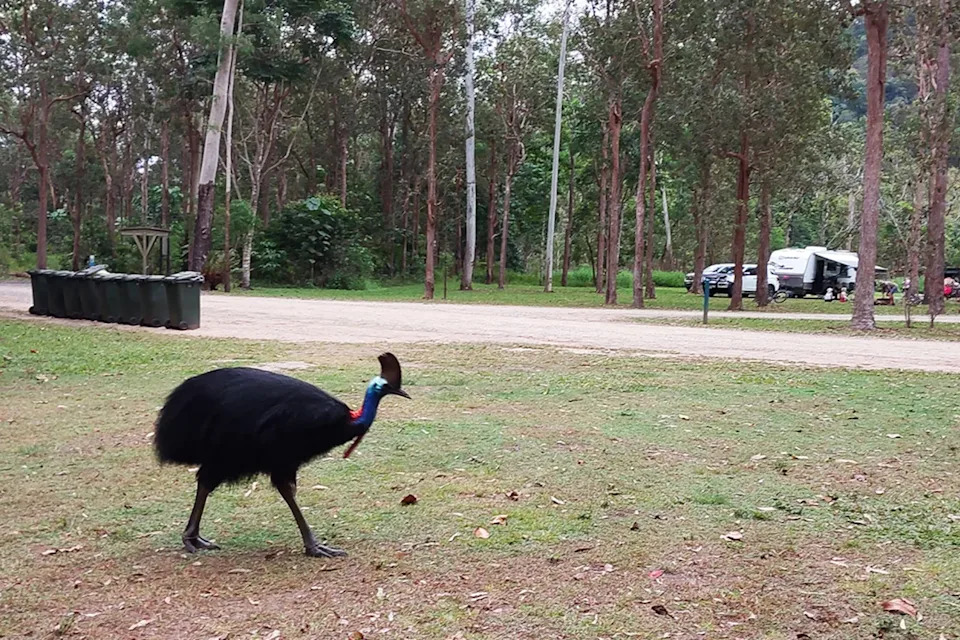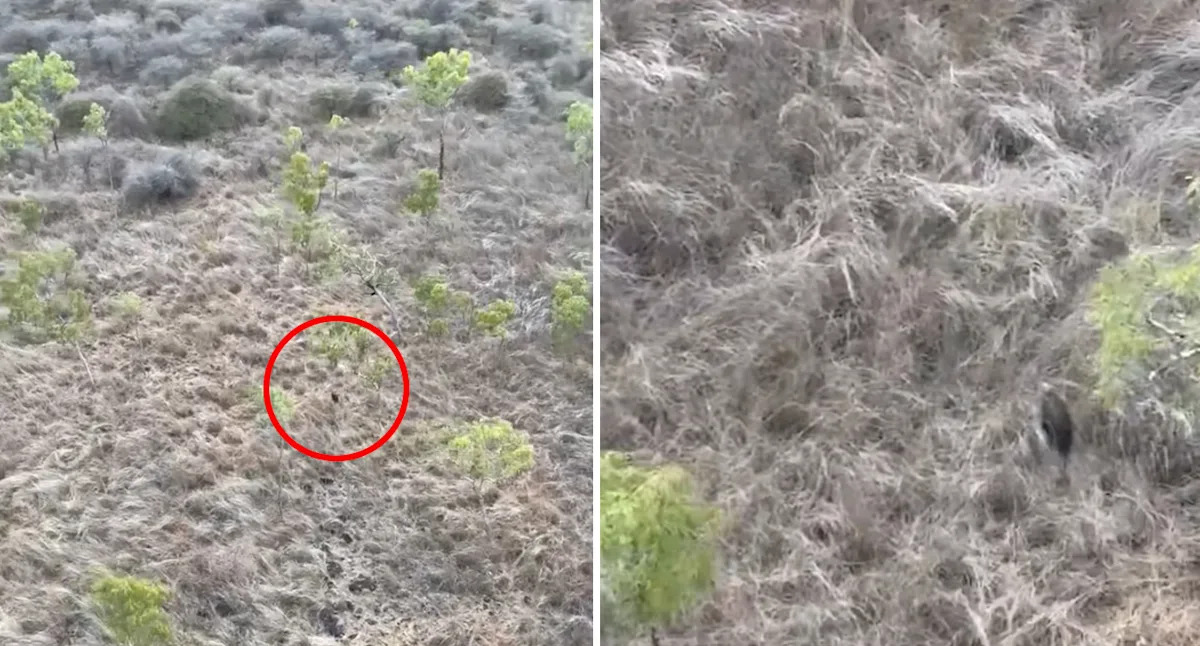An “unusual” sight in outback Queensland has sparked a bizarre and concerning mystery. For roughly six weeks, locals living near the rural town of Mount Surprise have been abuzz after a handful of people reported seeing a “large black bird” roaming around the area.
Despite the persistent chatter, Wil Kemp, a wildlife documentarian who operates trains in Far North Queensland along the Gulf Savannah, told Yahoo News Australia he initially believed the rumours were just that.
“I’ve heard so many of them in my time of working out there, [like] 30 foot taipans that have eaten calves,” he said.
“No one in town took it very seriously either. Obviously the people that saw it swore black and blue, but everyone that they told at the pub just kind of nodded their head and went ‘Yeah, right mate’.”
However, that all changed on Saturday when bush helicopter pilot Sam Kennedy clapped eyes on the creature firsthand. Video footage shows a lone, albeit healthy-looking southern cassowary running in the remote bushland — about 140km from its native habitat.
“It’s pretty hard to refute that,” Wil, who published the clip online, said. “I watched it over and over… you can see the casque on its head, the light blue colouration down the neck, everything. It’s pretty cassowary.”
Now the big question is, how did the cassowary get there?
Concerns endangered cassowary was transported by humans
Southern cassowaries are known to live in the dense, tropical rainforest between Paluma and Cooktown, as well as pockets of Cape York.
Wil, who spent 10 years caring for the species in zoos, said he believes human intervention led to the animal being spotted so far from home. Cassowaries need to consume about 5kg of mixed fruit a day to survive, he noted.
“The Gulf Savannah country, it can’t produce that much food. There’s a lot of grass out there, so I have no idea how it would have walked out there… or the period of time it would have taken for this animal to walk out there.”
“What is it that it’s been eating along the way to keep it in good enough condition that it’s got enough energy to try and outrun a helicopter? I can’t help but think that somewhere along the lifespan of this cassowary, people have been involved.”

Southern cassowaries are known to live in the dense, tropical rainforest between Paluma and Cooktown, as well as pockets of Cape York. Source: Queensland DETSI
Wil said someone may have found the orphaned chick on the coast and drove it back out to their property, believing it’s an emu.
Sean Dooley with BirdLife Australia agreed, stating that while cassowaries have been known to trek through unsuitable habitats to reach patches of rainforest, it’s “highly unlikely” the bird travelled to the area by itself.
“The alternative is that it has been caught and released, which in itself is not an easy task. Why someone would release it out there is a mystery,” he told Yahoo. “Maybe it was some idiot who thought it would be a lark to take one and then got rid of it when it became too difficult to handle?”
Fears cassowary will starve to death in bushland
However it got there, Wil and Sean said the most important thing to understand is that without its native habitat, the lone cassowary will likely die if it doesn’t make its way back.
“We are concerned for its welfare,” Sean said. “Cassowaries need the cover of rainforest where they will find the food they need, which is the fallen fruit on the rainforest floor. They are tough and resourceful birds, but it is hard to see a cassowary out in that habitat not starving to death in a few weeks.
Speaking to Yahoo, a spokesperson for Queensland’s Department of the Environment, Tourism, Science and Innovation confirmed there are “no plans to relocate the cassowary”.
“The reported sighting of a cassowary near Mount Surprise is unusual and well outside the species’ normal habitat,” the department said in a statement.
“People in the Mount Surprise area are asked to report any further sightings of the cassowary so we can understand more about its movements. Reports can be made by calling 1300 130 372.”
Wil said he hopes authorities change their tune. “It’s an endangered animal, and just to leave it out there where it doesn’t belong, just seems wrong,” he told Yahoo.
“Maybe they can locate a scat, see what it’s eating. Maybe that’ll tell us a lot. If it’s full of bananas and peaches, well, then we know someone out there is feeding it, or it’s gotten away from a local property.”
Do you have a story tip? Email: newsroomau@yahoonews.com.
You can also follow us on Facebook, Instagram, TikTok, Twitter and YouTube.


